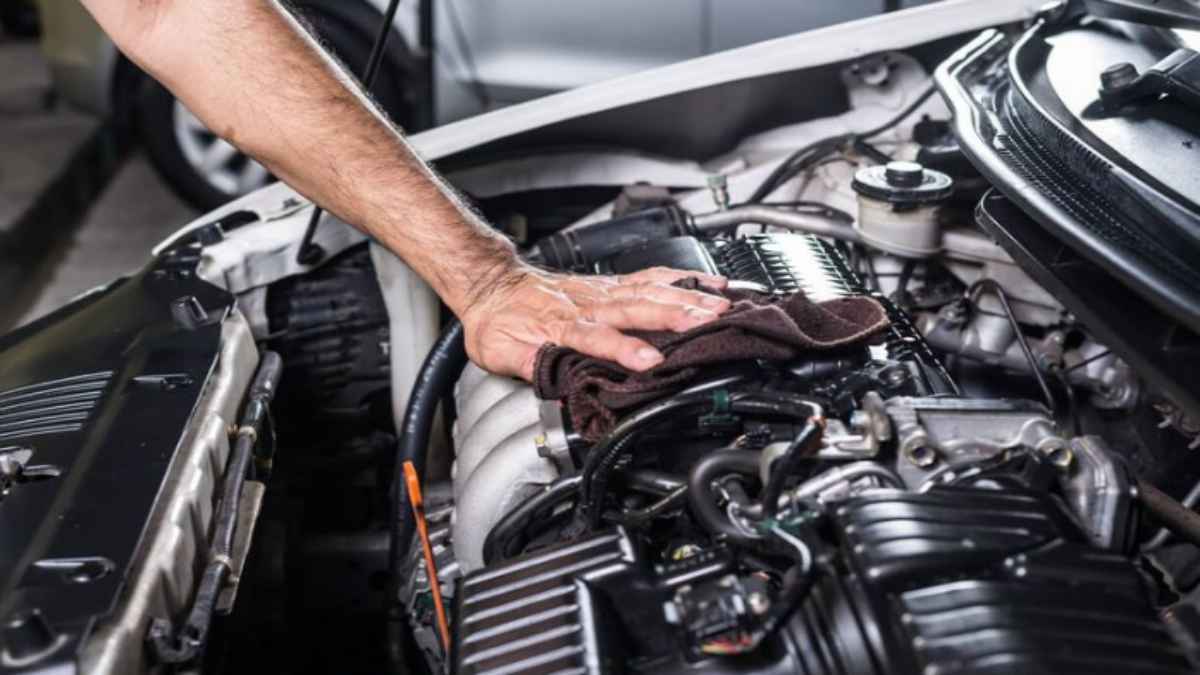Introduction
Steam cleaning an engine is a popular way to keep your vehicle’s engine bay clean, improve performance, and maintain overall engine health. Many DIY car enthusiasts wonder if steam cleaning is safe, how to do it properly, and what tools are needed. This guide answers these questions and walks you through the process, helping you clean your engine efficiently without causing damage.
What Is Steam Cleaning an Engine
Steam cleaning an engine means using high-temperature steam to remove grease, dirt, and grime from the engine bay. Unlike pressure washing, steam cleaning uses less water and offers a deep clean without harsh chemicals. It is effective for degreasing and safe for electrical parts when done correctly.
Why Should You Consider Steam Cleaning Your Engine
Keeping your engine clean helps detect leaks early, improves engine cooling, and extends the life of engine components. Steam cleaning is eco-friendly compared to chemical degreasers, making it a preferred choice for many car enthusiasts who want a safe, thorough clean.
Tools Needed for Steam Cleaning an Engine
-
Portable steam cleaner with adjustable pressure
-
Plastic bags or cling wrap for sensitive parts
-
Soft brushes for scrubbing
-
Microfiber towels
-
Safety goggles and gloves
Preparing Your Engine for Steam Cleaning
-
Cool the engine completely – Steam cleaning a hot engine can cause damage. Wait until the engine is cold.
-
Cover electrical parts – Protect your battery, alternator, air intake, and exposed wiring with plastic wrap or bags.
-
Remove loose debris – Use a brush or compressed air to clear leaves, dirt, and cobwebs.
Step-by-Step Process to Steam Clean an Engine
Step 1: Set Up Your Steam Cleaner
Ensure the steam cleaner is filled with distilled water and set to a moderate pressure setting.
Step 2: Start with the Top of the Engine
Begin steaming from the highest point to avoid pushing dirt into clean areas. Keep the nozzle at least 6 inches away to prevent damage.
Step 3: Use Brushes for Stubborn Dirt
Gently scrub greasy areas with a soft brush while steaming to loosen grime.
Step 4: Avoid Over-wetting Sensitive Components
Be careful not to saturate electrical parts or exposed sensors. Use plastic coverings and direct steam away from these areas.
Step 5: Dry the Engine
Wipe the engine bay with microfiber towels to remove excess moisture. Allow the engine to air dry before starting it.
Common Mistakes to Avoid When Steam Cleaning Your Engine
-
Using high pressure too close to components
-
Cleaning a hot engine
-
Neglecting to protect electrical parts
-
Using harsh chemicals instead of steam
-
Skipping drying time
Benefits of Steam Cleaning Compared to Other Methods
Steam cleaning uses less water than traditional pressure washing, reducing the risk of water damage. It also eliminates the need for harsh chemicals, making it safer for both your car and the environment. Additionally, steam penetrates tight spaces, giving you a deeper clean.
Is Steam Cleaning Safe for All Engine Types
Steam cleaning is generally safe for gasoline, diesel, and hybrid engines when done properly. However, always check your vehicle manufacturer’s recommendations to avoid warranty issues.
How Often Should You Steam Clean Your Engine
For most vehicles, steam cleaning once or twice a year is enough unless you frequently drive in muddy or dusty conditions. Regular cleaning helps maintain engine performance and appearance.
Environmental Impact of Steam Cleaning
Steam cleaning is eco-friendly because it reduces water consumption and avoids harsh chemicals. It’s a responsible way to maintain your vehicle and protect the environment.
Conclusion
Steam cleaning an engine is an effective, safe, and eco-friendly method for maintaining your car’s engine bay. By following the right steps and precautions, you can achieve a professional clean right at home. Regular steam cleaning helps extend engine life and keeps your vehicle running smoothly.
Frequently Asked Questions
Is steam cleaning an engine safe
Yes, when done properly, steam cleaning is safe for your engine and its components.
Can steam damage electrical parts
Steam can damage electrical parts if they are not covered or if steam is applied too closely.
Do I need professional help to steam clean my engine
Many DIY enthusiasts can steam clean engines themselves, but professionals can provide thorough service.
What is the best steam cleaner for engine cleaning
Choose a portable steam cleaner with adjustable pressure and continuous steam output.
How long does steam cleaning take
Steam cleaning usually takes 30-60 minutes depending on the engine size and dirt level.
Can I steam clean a hot engine
No, always allow the engine to cool completely before steam cleaning.
Is steam cleaning better than pressure washing
Steam cleaning uses less water and is gentler, making it better for delicate engine components.
How do I dry my engine after steam cleaning
Use microfiber towels and allow the engine to air dry before starting.
